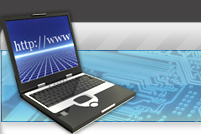The Technology Behind A Biometrics Fingerprint Scanner
The Biometrics Fingerprint Scanner works by scanning a person's fingerprint with a special sensor, analyzing the data to create a profile, which is then compared to the ones contained in the database for possible matches. If there is a match, the given individual receive the respective access to the computer or network. The level of access might vary depending on the type of account the person has. The thing is that a biometric fingerprint scanner is not only used to open doors, as it could also be used to provide access to a computer system.
If you are considering the purchase of a biometrics fingerprint scanner, narrow your choices to only those models that store the profiles in the actual device, not in a central computerized database, because hackers can attack it and possibly gain control over it. So the data is stored in a device that you own, it's yours, you carry it and it works for you. Hence, you are in control of your biometrics data (of all the people working in the company, whether they are 10 or 10,000).
When buying a biometrics thumbprint scanner, make sure the finger scanning window is a crown glass with a thickness of at least 14mm. Crown glass is much more reliable and robust compared to any semiconductor type fingerprint sensor. The finger is illuminated by 4 infra-red LEDs during scanning and the light intensity is automatically adjusted according to scanning fingerprint's characteristics (wet, dry, blurred, etc) to improve the quality of the captured fingerprint image.
We are living in a time when we have to remember passwords for all types of things, especially with the use of computer software products. You probably have a little black book where you keep all of them. It's really frustrating and gets quite confusing at times. But if you arm your office with a biometrics fingerprint scanner, it will mean one worry less for your employees and also increased security. Instead of giving the employee an access card (swipe card), you can hand them just a plusID token. Connect the biometrics fingerprint scanner via a USB cable to a computer that's running your enrollment software, and the employee merely has to swipe his or her finger across the fingerprint sensor three times, for the device to build a template of the fingerprint. The latest laptop models are equipped with a biometrics fingerprint scaner. Consider the new IBM ThinkPad for example. But IBM has chosen to go with a swipe-scanner rather than a touch-scanner. The swipe scanner is a good choice, because it provides better security - you have to drag your fingertip across the scanner, so there is no way to "lift" a fingerprint from the surface.
Privacy Policy
|



